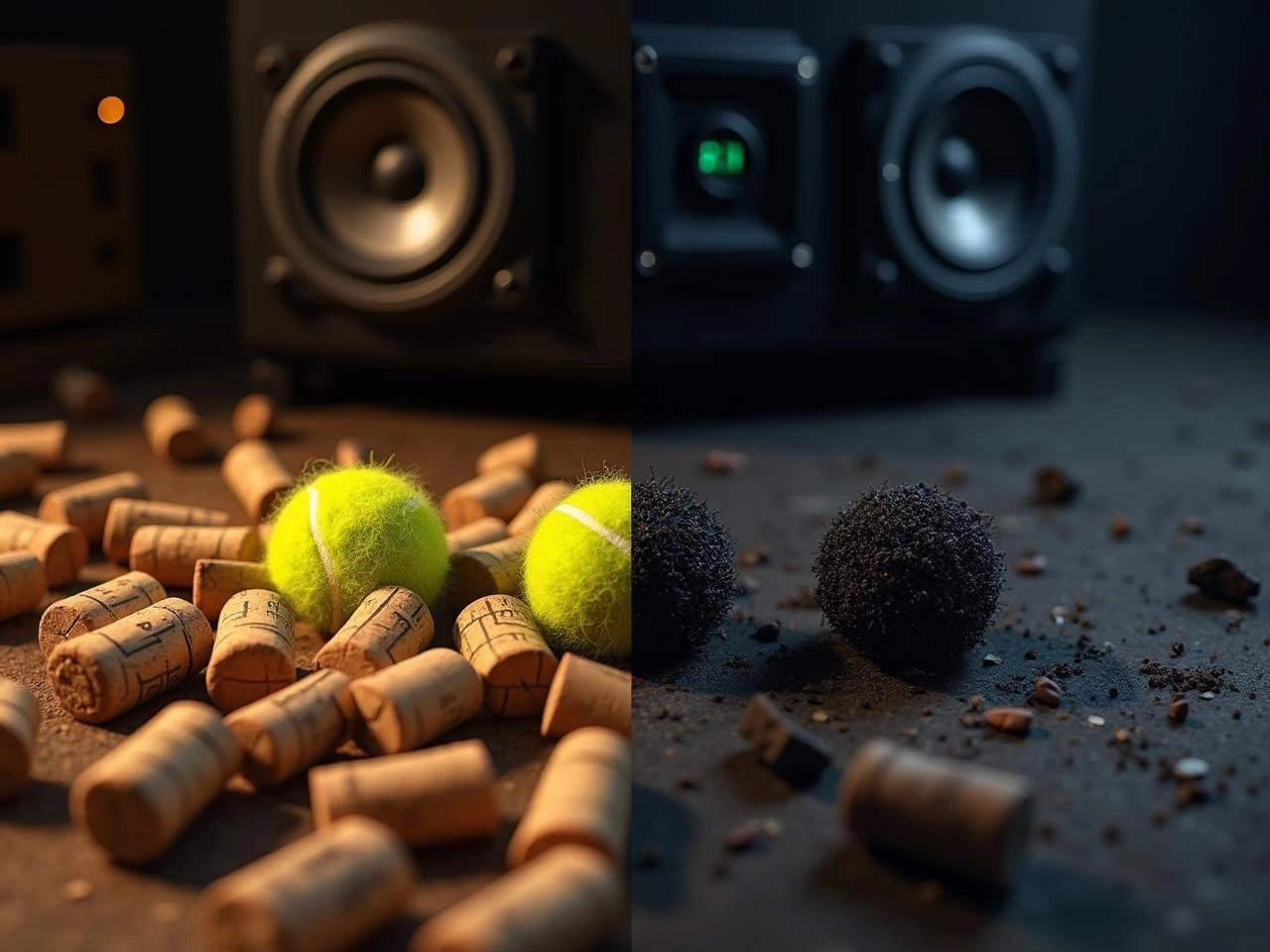The world of audio isolation is filled with DIY hacks, ranging from cork tiles to tennis balls and patio pavers. While these solutions can offer some measurable improvement over hard coupling (e.g., placing a speaker directly on a shelf), they are fundamentally limited by a lack of engineering and predictable performance. Professional mats are designed to achieve precise decoupling frequencies and consistent damping coefficients, which DIY materials simply cannot guarantee.
The Performance Ceiling of DIY Solutions
DIY isolation materials fail to deliver high-fidelity results primarily due to their uncontrolled mechanical properties.
Low-Frequency Failure
Materials like Sorbothane are often sold in small pads for DIY. While they damp mid-range frequencies effectively, they lack the correct compliance-to-load ratio to decouple heavy components at the critical low bass frequencies. A DIY cork tile, for instance, cannot generate the necessary displacement under load to decouple a heavy component below 50 Hz, leaving a significant portion of low-frequency rumble untreated.
Inconsistent Damping and Smearing
Many DIY solutions, such as rubber washers or cork/rubber blends, exhibit inconsistent damping. They may absorb one frequency but reflect another, leading to a “smeary” sound where certain frequencies sound dulled and others ring out. Professional solutions, particularly those utilizing engineered microcell structures, are designed for uniform energy dissipation across the entire audio band.
When DIY Works (and When It Fails)
| Solution Type | When it Works | When it Fails (Requires Professional Mat) |
| DIY (Cork, Felt, Pavers) | Isolating non-critical, lightweight components (e.g., small pre-amps, cable junctions). Controlling extremely high-frequency surface transmission. | Low-Frequency Decoupling (Subwoofers, Turntables, Heavy Speakers). Situations requiring guaranteed long-term material stability and load tolerance. |
| Professional (Engineered Foam, Footers) | Always. Essential for all heavy components and source equipment. Required when measurable, repeatable performance (dB reduction) is the goal. | N/A (A professional mat is designed to perform where DIY solutions cannot provide the necessary engineering tolerances). |
The Non-Negotiable Necessity of Engineering
A professional isolation mat, such as those employing microcell technology, is engineered with precise knowledge of its internal density, cell size, and material composition. This allows the manufacturer to calculate and guarantee a specific performance curve (e.g., a specific dB reduction at 30-200 Hz) based on component weight. DIY solutions, by nature, cannot offer this critical assurance of E-E-A-T (Expertise, Engineering, Authoritativeness, Trustworthiness) .
Q&A on DIY Isolation
Q: Are hockey pucks a good DIY alternative? A: Hockey pucks are made of vulcanized rubber, which is extremely hard. While they raise a component off the floor, they primarily hard-couple the component rather than decouple it. They offer minimal vibration absorption or dampening and are generally ineffective for high-fidelity audio isolation.
Q: Will the ‘squishy’ feeling of Sorbothane mean it’s working better? A: Not necessarily. That “squishy” feeling means it is highly viscoelastic, but if the component is too light, the material will not compress enough to hit its optimal resonant frequency. Conversely, if the component is too heavy, it will over-compress, losing its ability to damp effectively. The key is precise load matching, not just “squish.”
